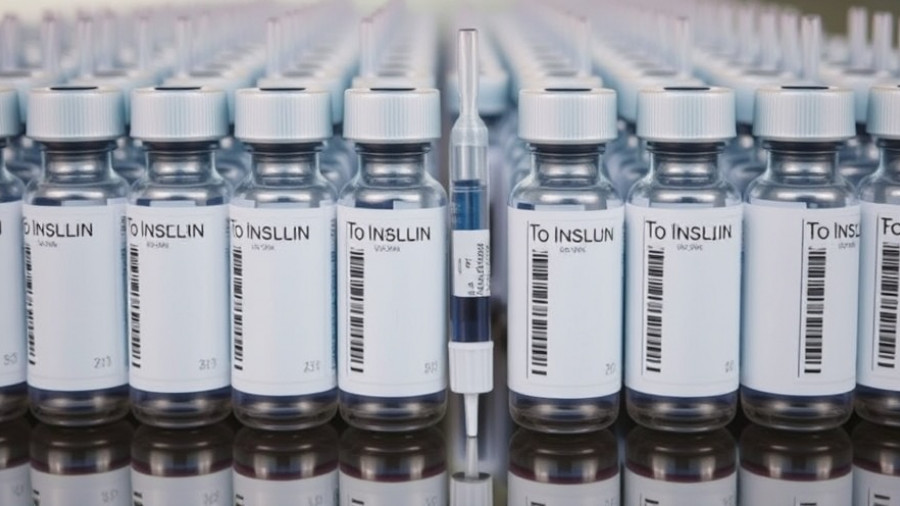
California's Affordable Insulin: A Game Changer in Healthcare
In a landmark move, California Governor Gavin Newsom has unveiled the state's initiative to provide low-cost insulin to its residents, with CalRx® Insulin Glargine pens priced at just $11. This initiative, set to roll out on January 1, 2026, represents a bold step towards not just making essential diabetes medications more accessible but also disrupting the pharmaceutical industry’s pricing strategies. For millions of Americans reliant on insulin, this development underscores a significant shift in the healthcare landscape.
Breaking Down Barriers: Insulin Costs in California
Insulin users across the nation often face exorbitant costs, with prices sometimes climbing to $400 for a pack of five pens. The introduction of California's affordable insulin is positioned as a critical response to these rising costs. According to reports, the state’s unique collaboration with Civica Rx, a non-profit generic drug manufacturer, will enable the production of these insulin pens at prices that reflect true manufacturing costs rather than profit-driven margins. As per Newsom’s announcement, this initiative may well serve as a model for other states grappling with similar healthcare dilemmas.
A Response to Rising Healthcare Costs
California's initiative is not occurring in a vacuum. In recent years, the pharmaceutical industry has come under increased scrutiny for its role in rising drug prices. Critiques have highlighted that common medications, like insulin, often come with inflated price tags that do not correlate to manufacturing or research costs. The CalRx initiative, spearheaded by Governor Newsom's administration, aims to challenge these practices head-on, potentially paving the way for similar government-led solutions elsewhere.
Competitiveness in the Pharmaceutical Market
With the CalRx branding, California seeks to introduce a competitive element within the pharmaceutical market. As Chris Noble of Health Access California has noted, major insulin manufacturers will now have to contend with a state-backed alternative that prioritizes patient access over profit. This competition is expected to encourage companies like Eli Lilly, Novo Nordisk, and Sanofi to reevaluate their pricing structures in light of the newly available options, giving consumers more choices and potentially lowering prices nationwide.
Wider Implications for Other Medications
The CalRx strategy hints at broader implications beyond insulin. California’s approach is seen as a trial for potential expansions into other essential medications or even vaccines, building on successful initiatives like the low-cost naloxone access program aimed at combating opioid overdoses. By establishing a precedent for state-led generic drug initiatives, California could inspire a nationwide movement toward increased healthcare affordability and accessibility.
Future Predictions: Transforming Pharmaceutical Practices?
As consumers across the United States grapple with high drug prices, California’s deployment of low-cost insulin could lead to significant changes in healthcare policies at the federal level. There is a growing sentiment that if California’s approach proves successful, other states may follow suit in establishing their own affordable medication programs, fundamentally transforming the pharmaceutical landscape. Will this push for affordability cause major drug manufacturers to rethink their pricing models altogether?
Community Reactions: Voices That Matter
The announcement has garnered significant positive feedback from health advocacy groups, with many emphasizing the urgent need for such initiatives in a healthcare environment where thousands are forced to make impossible choices between their health and financial stability. There is cautious optimism that California's initiative could lead to real change, not just locally, but across the country, especially as nearly eight million Americans depend on insulin for their daily lives.
Conclusion: A Call for Comprehensive Health Reform
As the CalRx insulin initiative gears up for launch, it is clear that this could be the dawn of what many hope is a transformative era in healthcare affordability. Pharmaceutical industry practices are under scrutiny like never before, and the actions taken by California may not only influence pricing strategies but also reinforce the healthcare community’s commitment to patient-centered care. For those invested in pharmaceutical sales, biotech development, or healthcare policy, staying informed on these developments will be crucial.
Ultimately, as healthcare costs continue to rise, we must encourage our leaders to implement strategies that prioritize accessibility and affordability. The rising momentum around initiatives like CalRx may well represent a turning point—a chance for drastic and necessary change in how medications are priced, marketed, and distributed. It’s time to take bold steps and ensure that no one has to choose between healthcare and financial security.
 Add Row
Add Row  Add
Add 




Write A Comment